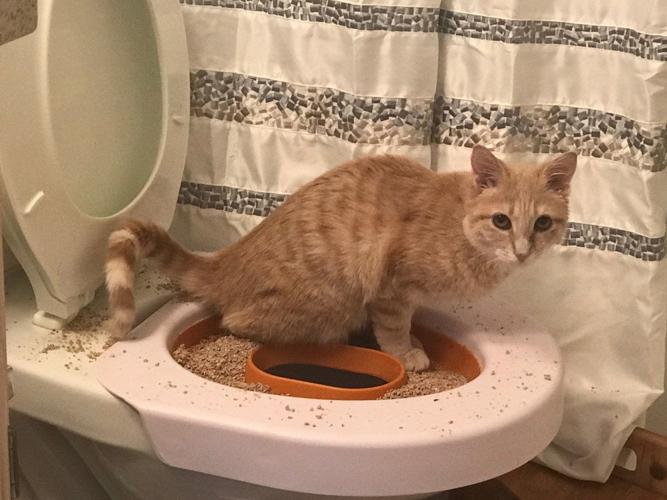The Consequences of Flushing Cat Poop Down Your Toilet - Protect Your Plumbing
The Consequences of Flushing Cat Poop Down Your Toilet - Protect Your Plumbing
Blog Article
On this page below you will discover a lot of great insight about How to Dispose of Cat Poop and Litter Without Plastic Bags.

Introduction
As pet cat proprietors, it's important to bear in mind how we deal with our feline good friends' waste. While it may seem practical to purge cat poop down the toilet, this method can have destructive effects for both the environment and human wellness.
Alternatives to Flushing
The good news is, there are safer and more responsible methods to throw away pet cat poop. Take into consideration the adhering to alternatives:
1. Scoop and Dispose in Trash
The most common approach of getting rid of feline poop is to scoop it into a naturally degradable bag and toss it in the garbage. Make certain to use a dedicated litter scoop and deal with the waste quickly.
2. Use Biodegradable Litter
Choose naturally degradable feline trash made from materials such as corn or wheat. These trashes are environmentally friendly and can be safely thrown away in the trash.
3. Bury in the Yard
If you have a yard, consider hiding pet cat waste in a marked area away from vegetable gardens and water sources. Make certain to dig deep adequate to avoid contamination of groundwater.
4. Install a Pet Waste Disposal System
Invest in a pet dog garbage disposal system particularly developed for cat waste. These systems make use of enzymes to break down the waste, lowering smell and environmental impact.
Health Risks
Along with ecological problems, flushing cat waste can also position health dangers to people. Feline feces may have Toxoplasma gondii, a bloodsucker that can trigger toxoplasmosis-- a potentially severe ailment, especially for expecting women and people with damaged body immune systems.
Environmental Impact
Flushing feline poop introduces unsafe microorganisms and parasites right into the water supply, posturing a significant threat to water ecological communities. These impurities can negatively influence aquatic life and compromise water high quality.
Conclusion
Liable animal possession prolongs beyond supplying food and shelter-- it additionally involves correct waste management. By avoiding flushing feline poop down the toilet and going with alternative disposal approaches, we can lessen our environmental impact and protect human health and wellness.
Why Can’t I Flush Cat Poop?
It Spreads a Parasite
Cats are frequently infected with a parasite called toxoplasma gondii. The parasite causes an infection called toxoplasmosis. It is usually harmless to cats. The parasite only uses cat poop as a host for its eggs. Otherwise, the cat’s immune system usually keeps the infection at low enough levels to maintain its own health. But it does not stop the develop of eggs. These eggs are tiny and surprisingly tough. They may survive for a year before they begin to grow. But that’s the problem.
Our wastewater system is not designed to deal with toxoplasmosis eggs. Instead, most eggs will flush from your toilet into sewers and wastewater management plants. After the sewage is treated for many other harmful things in it, it is typically released into local rivers, lakes, or oceans. Here, the toxoplasmosis eggs can find new hosts, including starfish, crabs, otters, and many other wildlife. For many, this is a significant risk to their health. Toxoplasmosis can also end up infecting water sources that are important for agriculture, which means our deer, pigs, and sheep can get infected too.
Is There Risk to Humans?
There can be a risk to human life from flushing cat poop down the toilet. If you do so, the parasites from your cat’s poop can end up in shellfish, game animals, or livestock. If this meat is then served raw or undercooked, the people who eat it can get sick.
In fact, according to the CDC, 40 million people in the United States are infected with toxoplasma gondii. They get it from exposure to infected seafood, or from some kind of cat poop contamination, like drinking from a stream that is contaminated or touching anything that has come into contact with cat poop. That includes just cleaning a cat litter box.
Most people who get infected with these parasites will not develop any symptoms. However, for pregnant women or for those with compromised immune systems, the parasite can cause severe health problems.
How to Handle Cat Poop
The best way to handle cat poop is actually to clean the box more often. The eggs that the parasite sheds will not become active until one to five days after the cat poops. That means that if you clean daily, you’re much less likely to come into direct contact with infectious eggs.
That said, always dispose of cat poop in the garbage and not down the toilet. Wash your hands before and after you clean the litter box, and bring the bag of poop right outside to your garbage bins.
https://trenchlesssolutionsusa.com/why-cant-i-flush-cat-poop/

Do you really like more info about Don’t flush cat feces down the toilet? Put a review below. We will be delighted to see your reactions about this review. In hopes to see you back again later on. Do you know someone else who is intrigued by Can You Flush Cat Poo or Litter Down the Toilet?? Do not hesitate to share it. We treasure reading our article about Don’t flush cat feces down the toilet.
Order Repair Report this page